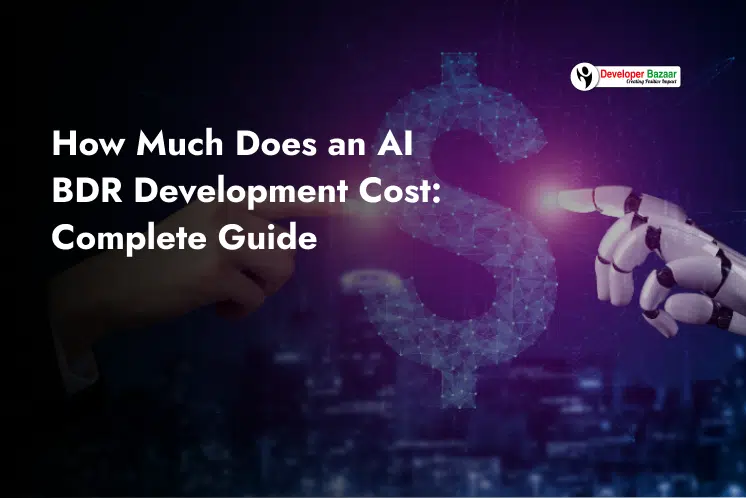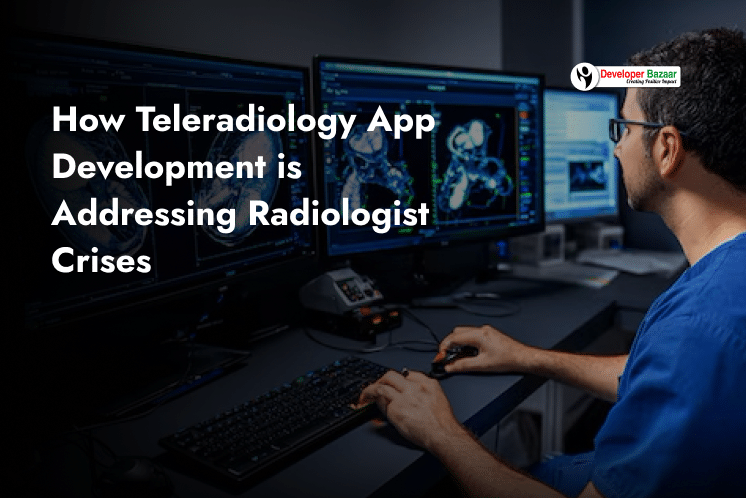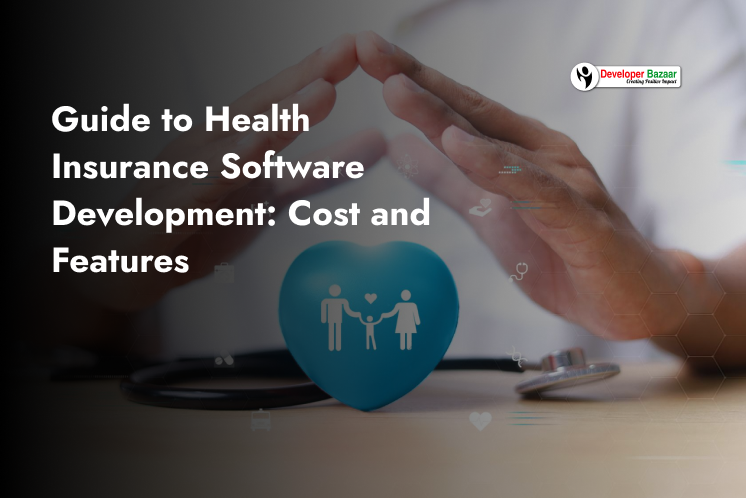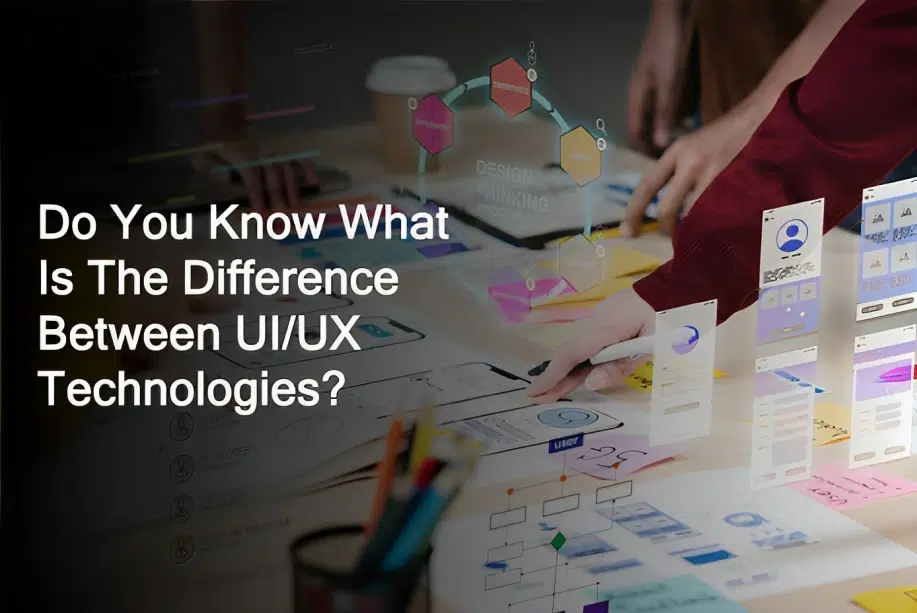Table of Contents
ToggleArtificial Intelligence (AI) is changing the way we look and perform in the healthcare industry. One of the most exciting areas is Artificial Intelligence in Medical Imaging. AI helps doctors find diseases early, look at medical images quickly, and make better decisions. It acts like a smart helper that reads X-rays, MRIs, and CT scans faster than humans.
AI can spot things that the human eye may miss, helping doctors give better treatment to patients. This guide explains how AI works in medical imaging, why it is important, the current market growth, and how you can use it to improve healthcare services.
Artificial Intelligence in Healthcare
Artificial Intelligence in healthcare means using smart computer systems that can think and learn like humans. These systems can look at medical data, understand it, and help doctors make decisions. Artificial Intelligence in Medical Imaging helps in many areas like image analysis, patient records, and even talking to patients using AI powered chatbots.
Key Uses of AI in Healthcare:
- Medical Imaging: AI helps read X-rays, CT scans, and MRIs. It can find tumors, fractures, or infections very quickly.
- Predictive Analytics: AI studies old health records and predicts if a patient may get sick in the future.
- Electronic Health Records (EHRs): AI helps organize patient data so that doctors can access important info fast.
- Virtual Health Assistants: These are AI-powered chatbots that answer patient questions and help book appointments.
Benefits of Using AI in Healthcare:
- More Accuracy: AI can spot small problems in images or records that people might miss.
- Faster Service: It helps save time by analyzing large amounts of data quickly.
- Personalized Treatment: AI checks patient history and gives advice that fits each person's unique needs.
By adding AI to healthcare, doctors can work faster, reduce mistakes, and give better care to patients. That’s why many hospitals and clinics are now choosing AI-powered tools.
The Role of AI in Medical Imaging
Artificial InteIligence in Medical Imaging is like having a super-smart assistant that looks at pictures of the inside of your body and tells the doctor what’s wrong. These pictures can come from X-rays, CT scans, or MRIs. AI tools can check them quickly and give important details.
How It Works:
- Scan: A patient gets an X-ray or MRI.
- Analyze: AI looks at the scan using its trained system.
- Detect: AI finds signs of disease, like a tumor or a broken bone.
- Support: It gives doctors a list of possible issues to check.
Examples of Where AI Helps:
- Radiology: Helps radiologists spot small changes in organs or bones.
- Cardiology: Look at heart images to find blockages or damage.
- Cancer Detection: Finds small tumors in lungs, breasts, or brains at early stages.
When you use Artificial Intelligence for medical diagnostics, it improves the chances of finding and treating health problems early. It also helps doctors feel more confident in their decisions.
Importance of Artificial Intelligence in Medical Image Analysis
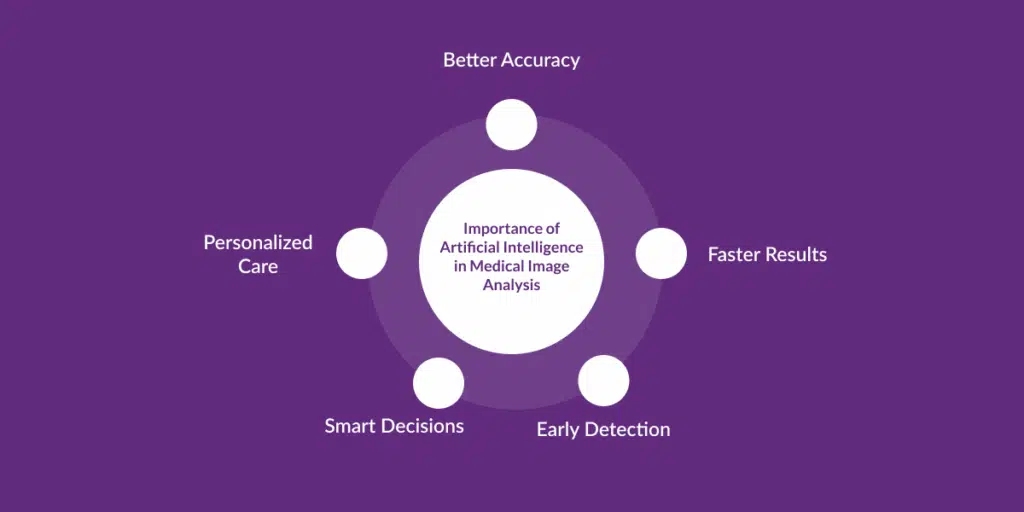
The role of Artificial Intelligence in Medical Image Analysis is more important than ever. Here is the reason why so:
1. Better Accuracy
AI systems don’t get tired or distracted. They always look at images the same way. This helps doctors avoid missing problems.
2. Faster Results
AI can check thousands of images in seconds. This helps hospitals treat patients faster, especially in emergencies.
3. Early Detection
AI can spot diseases like cancer in a very early stage before they get worse. Early treatment means better recovery for patients.
4. Smart Decisions
AI doesn’t just look at one image. It can combine scan results with patient records, lab reports, and even genetic info. That means doctors get a full picture of what’s happening inside the body.
5. Personalized Care
With all this information, AI helps doctors create treatment plans that are made just for one patient. That’s called precision medicine.
AI is not here to replace doctors but it’s here to help them do their jobs better.
Current Market Overview for the AI in Medical Imaging
The future of Artificial Intelligence in Medical Imaging looks bright and expanding rapidly. Below are the current stats mentioned according to GlobeNewsWire:
Global Growth:
- In 2025, the AI in medical imaging market is expected to reach $1.67 billion.
- By 2033, it is predicted to grow up to $12.69 billion.
- This means the market will grow at a CAGR of 27.10% from 2025 to 2034.
These numbers show that hospitals, clinics, and healthcare companies are investing heavily in AI technology.
Medical Imaging Market:
- In 2024, the medical imaging market is worth $49.61 billion.
- By 2034, it will likely grow to $80.52 billion.
- The overall growth rate is 4.96% CAGR.
What This Means:
As the demand for medical imaging grows, the need for Artificial Intelligence in Medical Image analysis will also grow. Hospitals required tools that make image reading faster and more accurate.
AI App Development Companies are already working on AI-powered tools for clinics, labs, and hospitals. If you’re planning to invest or build your own solution, now is the perfect time.
Key Applications of AI in Medical Imaging
Artificial Intelligence in medical imaging is changing the way doctors detect and treat diseases. Today, AI is used in radiology, oncology, and neurology to help doctors analyze images quickly and accurately. These smart systems can spot things that even experienced eyes might miss.

1. Radiology: Faster, Smarter Scans
Radiologists use imaging tests like X-rays, MRIs, and CT scans to look inside the body. AI in medical imaging helps by detecting issues like lung nodules or brain injuries faster and with more precision.
For example, in chest CT scans, AI can find small lung nodules that may lead to cancer. This helps catch problems early, when they are easier to treat.
2. Oncology: Spotting Cancer Early
In cancer care, AI in medical imaging is helping doctors detect tumors early. One of the biggest wins is in breast cancer screening. Using deep learning, a type of AI, computers can look at mammograms and tell if a lump is harmless or harmful.
With over 5 million mammograms from around the world being studied, this technology is saving lives by catching cancer early.
3. Neurology: Detecting Brain Problems
AI helps doctors read brain scans to find early signs of stroke, Alzheimer’s, or brain tumors. AI in medical image analysis can spot tiny changes in the brain that a human might miss.
For example, diffusion-weighted imaging (DWI) helps spot strokes early, and AI models using this method have shown over 94% accuracy.
The Impact of AI on Diagnostic Accuracy for Medical Imaging
AI in medical imaging helps in doing things faster and accurately. It also makes diagnoses more consistent.
1. AI Reduces Human Error
Doctors and radiologists are smart, but they’re human, and humans can make mistakes. Fatigue or stress can affect decision-making. AI never gets tired. It gives the same answer every time.
For example, in detecting pneumonia on chest X-rays, AI can match or even beat human doctors in accuracy.
2. AI Helps with Early Detection
Finding diseases early makes them easier to treat. AI is great at this. Take diabetic retinopathy, an eye disease that can cause blindness. AI can find signs of this disease before a patient notices any symptoms. That means faster treatment and better chances of recovery.
3. More Reliable Screenings
In breast cancer screening, AI helps reduce missed diagnoses and false alarms. AI tools have been shown to catch signs of cancer that doctors didn’t find easily. This makes tests more trustworthy and reduces the number of unnecessary procedures.
AI in medical image analysis is helping move healthcare toward precision medicine where treatments are tailored to each patient based on accurate data.
Advancements in AI Technology for Medical Imaging
AI in medical imaging is growing fast. With better software, smarter algorithms, and stronger hardware, the tools keep getting better.
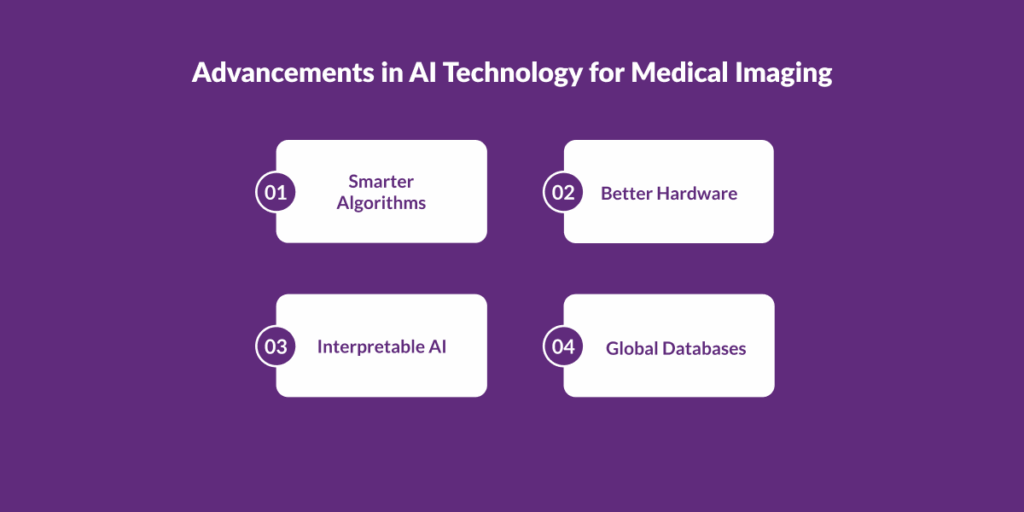
1. Smarter Algorithms
In the early 2010s, basic machine learning was used. Now, we have deep learning and AI large language models that can read and understand complex medical images. These algorithms can learn from huge image databases and become better over time.
2. Better Hardware
AI tools need fast processors to work quickly. For this high-performance GPUs and AI processors are required and plays an important role. These allow real-time analysis of scans, helping doctors get results quickly even during an emergency.
3. Interpretable AI
The future of AI in medical imaging isn’t only for better results but it also builds trust. New models are being designed to explain how they reach their conclusions. This helps doctors understand and trust the technology.
4. Global Databases
Thanks to cloud-based platforms, AI systems can learn from global datasets like 5 million mammograms from 5 continents. This helps make AI tools more accurate and less biased.
If you’re planning to build an AI system for medical diagnostics, working with an experienced AI app development company can help you bring the latest technology to your hospital or clinic.
What Challenges in Adopting AI for Medical Imaging
Even though AI in medical imaging is powerful, there are a few obstacles in the path to adapt these advanced technologies.
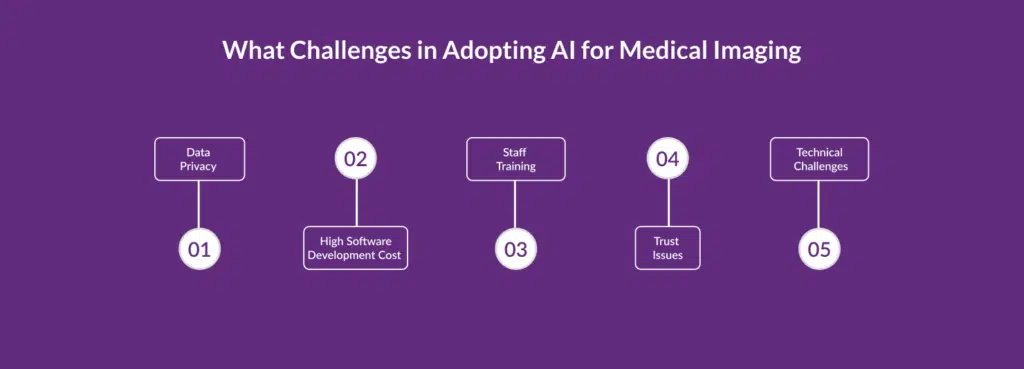
1. Data Privacy
To work well, AI needs a lot of patient images. But this raises privacy concerns. Hospitals must follow strict rules like HIPAA (in the U.S.) to keep patient data safe. A software development company must build strong security systems to protect sensitive health data.
2. High Software Development Cost
Buying AI software and upgrading equipment can be expensive. The software development cost includes not only building the AI but also training staff and maintaining hardware. Smaller clinics may find this hard. Partnering with a reliable healthcare app development company can help make the transition smoother and more affordable.
3. Staff Training
Doctors and technicians need to learn how to use AI tools. That means training sessions and workshops. If people don’t know how to use the tools, the AI won’t be helpful.
4. Trust Issues
Some doctors worry about AI making mistakes, or even replacing them. It’s important to explain that AI supports, not replaces, medical professionals. Transparency helps build trust.
5. Technical Challenges
Integrating AI with existing hospital software can be tricky. The systems must talk to each other smoothly. Also, AI tools must be tested on different types of data to make sure they work for everyone.
To fix these problems, hospitals should work with experts who provide artificial intelligence development services and know the ins and outs of the software development process.
Integration of AI with Medical Imaging Techniques
Medical imaging is a key part of healthcare. It helps doctors see inside the body without surgery. Common imaging tools include:
- MRI (Magnetic Resonance Imaging)
- CT Scans (Computed Tomography)
- Ultrasound
- X-rays
Now, Artificial Intelligence (AI) is being added to these traditional tools and the results are amazing.
1. A Powerful AI Expert Team
When we combine AI with medical imaging, we get faster, smarter, and more accurate results. Think of it like a super team. The machines take pictures (MRI, CT, etc.), and AI quickly looks at those images to find signs of illness.
This is called Artificial Intelligence in Medical Imaging. It’s already helping doctors detect things like tumors, brain problems, and even heart diseases faster than before.
2. Speed Boost in MRI Scans
MRI scans are usually slow and take time. But AI helps in reducing the time needed.
A study in the Journal of Magnetic Resonance Imaging found that AI can reduce MRI scan time without making the image blurry. This helps patients spend less time in machines and allows hospitals to serve more people.
3. AI Helps Doctors Catch More Diseases
AI is also great at finding small problems in images that the human eye might get missed to detect.
For example:
- AI with ultrasound is helping catch breast cancer early.
- In prostate cancer cases, AI has helped improve detection rates too.
AI in Medical Imaging is called a game-changer, it helps doctors see more, spot faster, and treat better.
4. AI Supports Doctors, Doesn’t Replace Them
Some people worry that AI will take over jobs. But in reality, AI works with doctors, not against them.
- AI looks at tons of images fast.
- It gives suggestions based on patterns it finds.
- The doctor makes the final call.
This teamwork means fewer mistakes and better care for patients.
Conclusion
Artificial Intelligence in Medical Imaging is an advanced technology that takes a big step in making healthcare faster, better, and more personal.
With the help of AI doctors now work smartly and faster with accuracy. It helps plan treatments that fit each patient perfectly.
This powerful tool is saving time, reducing errors, and even saving lives. But this is just the beginning. As hospitals and clinics start using AI more, the quality of care will only get better.
Whether you’re a patient, doctor, or someone building healthcare software, it is the right time to start and grow in this competitive market. AI in Medical Imaging is the future.
If you’re looking to develop AI healthcare tools, you can work with a trusted healthcare app development company to build something powerful, accurate, and useful.
FAQs
1. How is AI used in diagnostic imaging?
A: AI in diagnostic imaging is used to quickly scan and analyze images like X-rays, MRIs, and CT scans. It finds patterns, spots early signs of diseases, and helps doctors make better decisions.
For example:
- AI can detect a tumor in an X-ray.
- It can measure changes in brain scans for Alzheimer’s.
- It flags risks earlier than human eyes can.
This makes diagnosis faster, more accurate, and safer for patients.
2. How is artificial intelligence used in medical diagnostics?
A: Artificial Intelligence for medical diagnostics helps doctors in many ways:
- It reads medical images quickly.
- It predicts disease risks using patient data.
- It helps create treatment plans based on patterns.
AI also works with lab tests, health records, and even voice recordings to give a full picture of the patient’s health. Doctors use this information to make better decisions, earlier than ever before.
3. What is the AI tool for medical imaging?
There are many AI tools for medical imaging available today. Some of the popular ones include:
- Google DeepMind – Detects eye diseases.
- Aidoc – Analyzes CT scans for emergencies.
- Zebra Medical Vision – Finds bone, heart, and lung issues.
- Arterys – Used for heart MRI scans.
These tools use Artificial Intelligence in Medical Image analysis to support radiologists and improve patient outcomes.
If you want to create your own tool, you can contact an AI app development company to help you build it.
4. What is the future of AI in medical imaging?
A: The future of AI in medical imaging looks very bright!
Here’s what we can expect:
- Faster image reading for emergencies
- More accurate results, even for rare diseases
- Automatic reports for doctors and patients
- Better treatments using personalized image data
- Cloud-based AI tools for sharing results between hospitals
Also, as the software development cost of AI tools goes down, more hospitals will be able to use them. AI will soon be in every hospital, helping to save lives with speed and accuracy.
5. Is AI used in MRI?
A: Yes, AI is used in MRI. In fact, MRI is one of the areas where AI is helping the most. AI helps in:
- Reducing scan time (so patients don’t have to stay still too long)
- Reconstructing clear images
- Finding signs of diseases faster
This makes MRIs safer, faster, and more helpful. Hospitals are now using Artificial Intelligence in Medical Imaging tools to improve MRI quality and efficiency.

RM Mishra
Co-Founder
Developer Bazaar technologies










